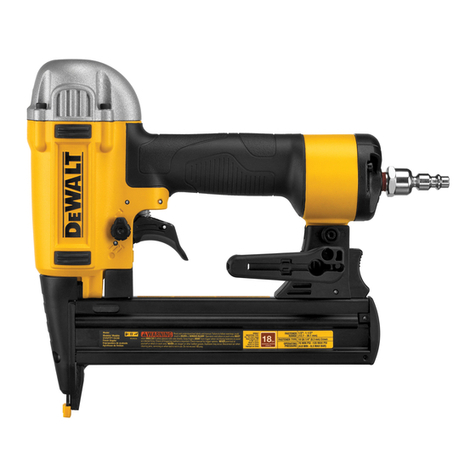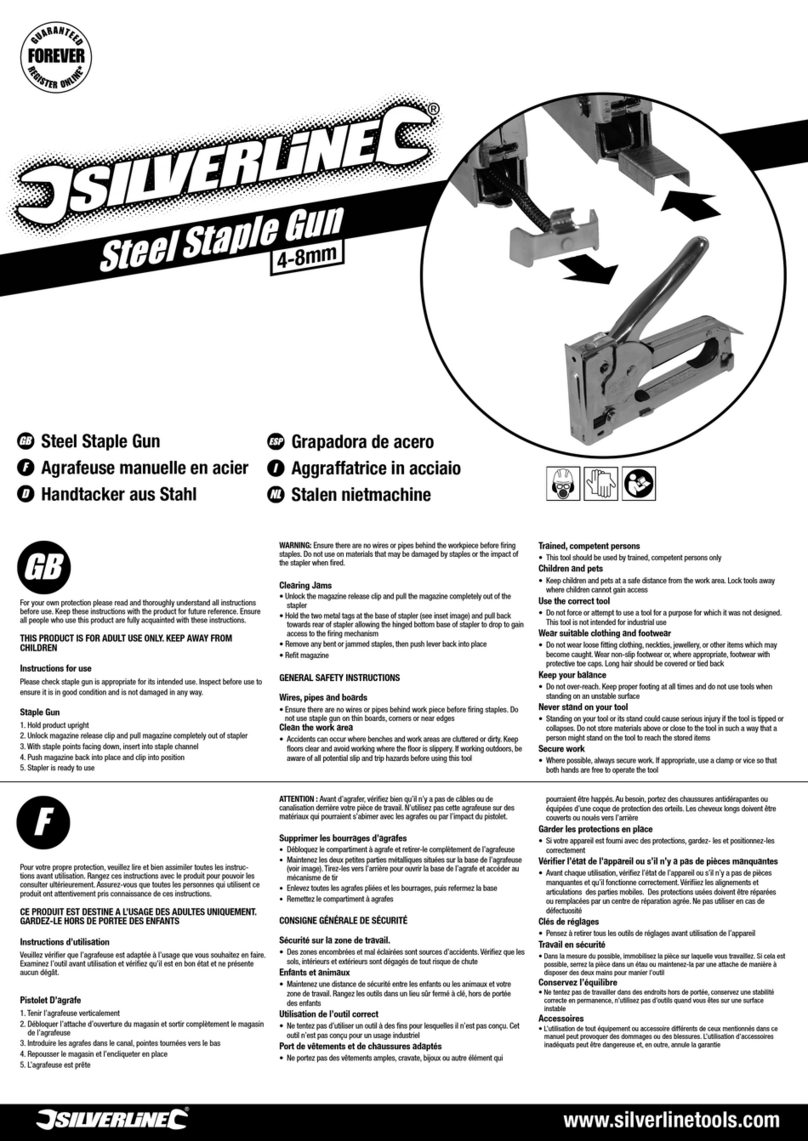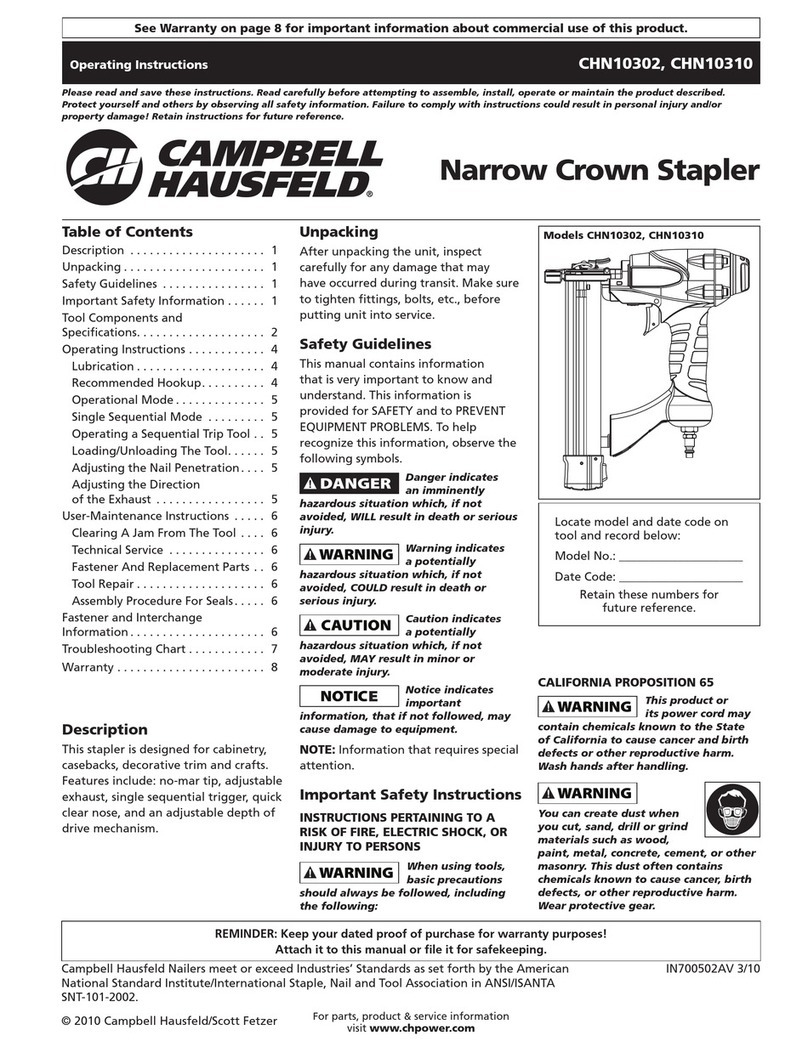Ethicon ECHELON FLEX User manual

In-Servicing Guide
ECHELON FLEX™ Powered Plus Staplers

Nomenclature
Battery pack
Anvil release button
Knife reverse switch
Manual override
Articulation joint Shaft
Articulation fin and rotating knob
Reload alignment slot
Firing trigger
Closing trigger
Red firing trigger lock
Knife blade indicator
Anvil jaw
Reload/cartridge jaw

Loading the device
5. Remove the staple-retaining cap by lifting it straight up and discard. 6. Observe the surface of the new reload to ensure no colored drivers are visible and that
the reload lies lat in the jaw channel.
3. Ensure that the staple retaining cap is present. Insert the reload by sliding it against the
bottom of the reload jaw until the stapler alignment tab stops in the reload alignment
slot of the jaw.
4. Snap the reload securely in place.
1. Install the battery pack. An audible click will be heard when the battery pack is fully
inserted. It can be inserted in either orientation; there is no up or down.
Note: Tissue thickness should be carefully evaluated prior to using the instrument. Refer
to the Reload Product Codes Chart for proper reload selection.
2. Verify that the reload size matches the instrument size to be used
(e.g., use 60mm reload with 60mm stapler).

Opening and closing the jaws
2. To open the jaws, squeeze the closing trigger, and then simultaneously push
the anvil release button on the side of the device. Maintain pressure on the anvil
release button and slowly release the closing trigger.
1. Close the jaws of the instrument by squeezing the closing trigger until a click is
heard. The audible click indicates that the closing trigger and the jaws are locked.
Four ways to articulate
1. Against the body wall
3. Against a grasper
2. Against tissue in the body
4. Hand assisted
Articulation
Ensure that the jaws are in the open position.
1. Pull back and hold the articulation in to activate the articulation joint.
2. Apply lateral pressure to the jaws to articulate the device.
3. Release articulation in to lock jaws into articulated position.
4. Clamp, staple, cut, return, release.

Firing the device
1. Ensure that the tissue lies lat and is positioned properly between the jaws and that no
obstructions (e.g., clips, stents) are within the jaws. Any “bunching” of tissue along the
reload may result in an incomplete staple line.
3. Pull back the red iring trigger lock. 4. Pull the exposed trigger to ire (motor will be audible).
Note: Alternatively, for enhanced tissue compression when using the ECHELON FLEX™
Powered Plus Stapler, the user may pulse the iring trigger throughout the iring cycle until the
transection is completed. Similarly, if the iring sequence is interrupted, the user may pulse the
iring trigger to continue the transection. It is recommended that the pulsing technique not be
initiated until after the knife blade indicator has moved into the closed bottom channel and is
no longer visible to minimize potential of inadvertent lockout.
5. When the motor stops, release the iring trigger to automatically return the knife to the
home position.
2. Fully close the closing trigger until it clicks (audible click will occur).
Note: Holding the jaws in place for 15 seconds after closing and prior to iring may result in
better compression and staple formation.

Opening the jaws
2. Squeeze the closing trigger, and then simultaneously push the anvil release button
on the side of the device. Maintain pressure on the anvil release button and slowly
release the closing trigger.
1. Ensure the knife is in the home position by doing a visual check on the underside
of the reload jaw. The jaws will not open if the knife is not in the home position.
Reloading the device
1. Push upward (toward the anvil) to unsnap the reload from the reload jaw.
2. Prior to reloading the stapler, hold the instrument in a vertical position with anvil and
cartridge jaw completely submerged in sterile solution. Swish vigorously to remove any
loose formed staples.
3. Wipe the inside and outside surfaces of the anvil and cartridge jaws to clean any unused
staples from the instrument.
4. Follow the same steps outlined earlier in the Loading the device section.

Stapler lockout
Under certain circumstances, the stapler will lock out. These include instances when no cartridge or an incorrect or used cartridge is present. At any time, if the knife reverse
switch does not return the knife to the home position and the jaws will not open:
1. Reverse: Slide the knife reverse switch forward.
4. Override: If the knife does not return, use the manual override (remove the access
panel labeled “Manual Override” on the top of the handle).
Note: After the manual override is used, the device becomes nonfunctional.
2. Battery: Remove and re-install the battery to check that it is securely installed and
that the device has power.
3. Reverse: See Step 1.

Manual override system
1. To use the manual override, remove the access panel labeled “Manual Override” on
the top of the instrument handle. The manual override lever will be exposed.
ONLY to be used if the reverse switch does not return the knife blade.
2. Move the lever FORWARD AND BACKWARD until it can no longer be moved. The
forward and backward movement of the lever may require multiple cycles and
should be completed until the knife blade is conirmed to be in the home position.
Note: After the manual override is used, the device becomes disabled for any
subsequent irings.

Battery pack disposal
IMPORTANT: Do NOT incinerate/autoclave battery pack in the hospital.
• Per the manufacturer, the batteries are not to be exposed to temperatures above 100 degrees Celsius.
• The batteries are not reusable and do not need to be sterilized.
• Do not use Ethylene Oxide (EtO) process for battery pack.
2. The battery pack should be returned to a battery collection point. It must not be
disposed of in the hospital waste
1. Disconnect the battery pack.
* Note: In the event that the battery pack needs to be decontaminated
before disposal, follow this process between Steps 1 and 2:
• Use a soft bristle brush to clean the battery pack surface with a neutral
pH detergent or neutral pH enzymatic detergent (e.g., Simple Green D
Pro 3,#10% bleach, 70% isopropyl alcohol), prepared according to the
manufacturer’s instructions.
• Thoroughly scrub areas that contain crevices.
• Thoroughly wipe o detergent with lukewarm tap water
(DO NOT SUBMERGE IN WATER OR DETERGENTS).
• Visually inspect to ensure the debris is removed. Repeat cleaning if
necessary to obtain a visually clean battery pack.
Recycling of batteries is obligatory in the European Union. If the battery pack requires decontamination prior to disposal, follow your hospital‘s protocol or below instructions.*
# Simple Green D Pro 3 is a registered trademark of Sunshine Makers, Inc.
Please refer always to the Instructions for Use / Package Insert that come with the
device for the most current and complete instructions.
The third party trademarks used herein are the trademarks of their respective owners.
Ethicon Endo-Surgery (Europe) GmbH
Hummelsbütteler Steindamm 71
22851 Norderstedt, Germany
www.jnjmedicaldevices.com
© Ethicon Endo-Surgery (Europe) GmbH 2021, 167585210219 EMEA
Other manuals for ECHELON FLEX
3
Other Ethicon Staple Gun manuals
Popular Staple Gun manuals by other brands
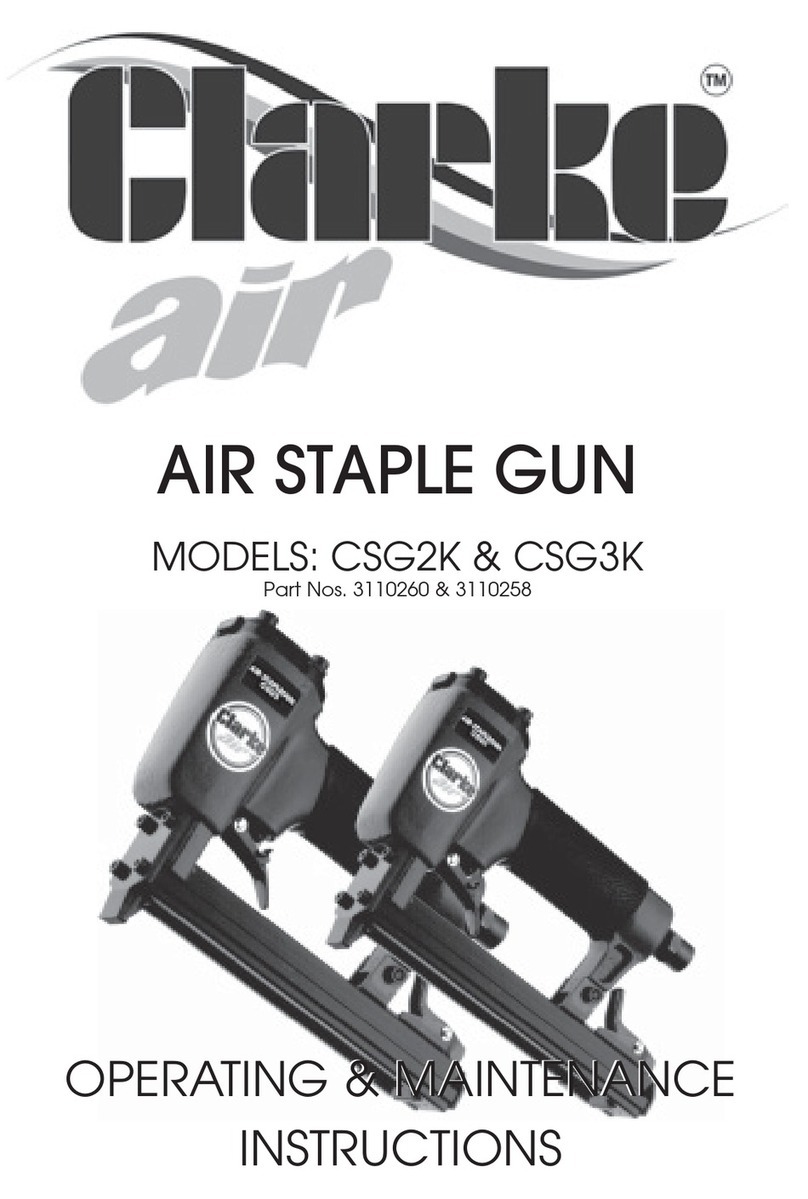
Clarke
Clarke Air CSG2K Operating & maintenance instructions
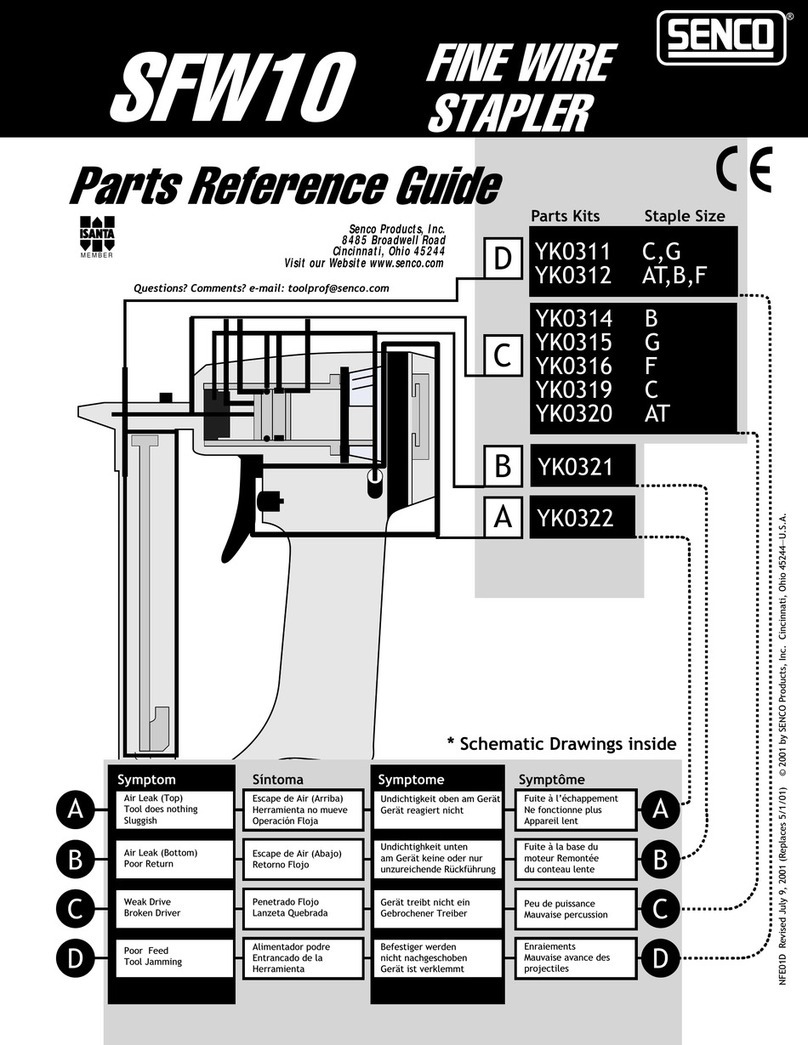
Senco
Senco SFW10 Parts reference guide
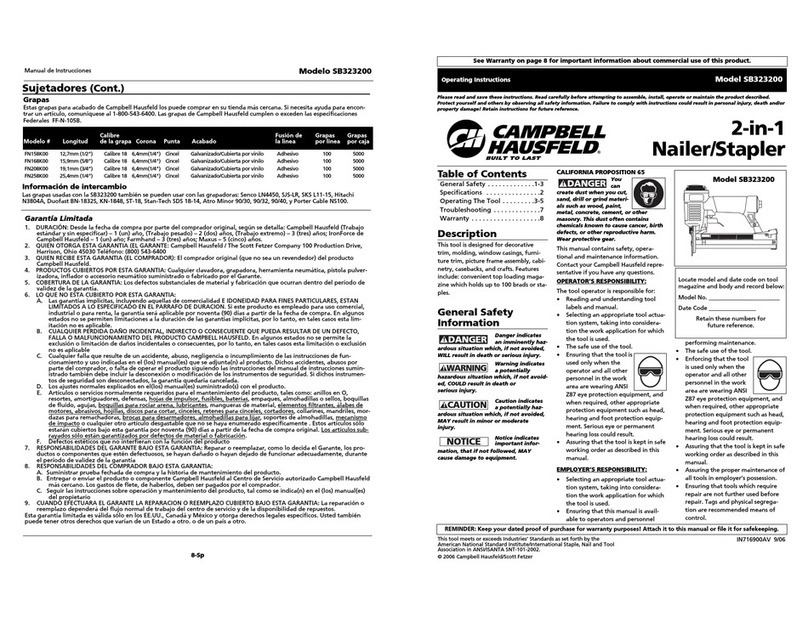
Campbell Hausfeld
Campbell Hausfeld SB323200 operating instructions
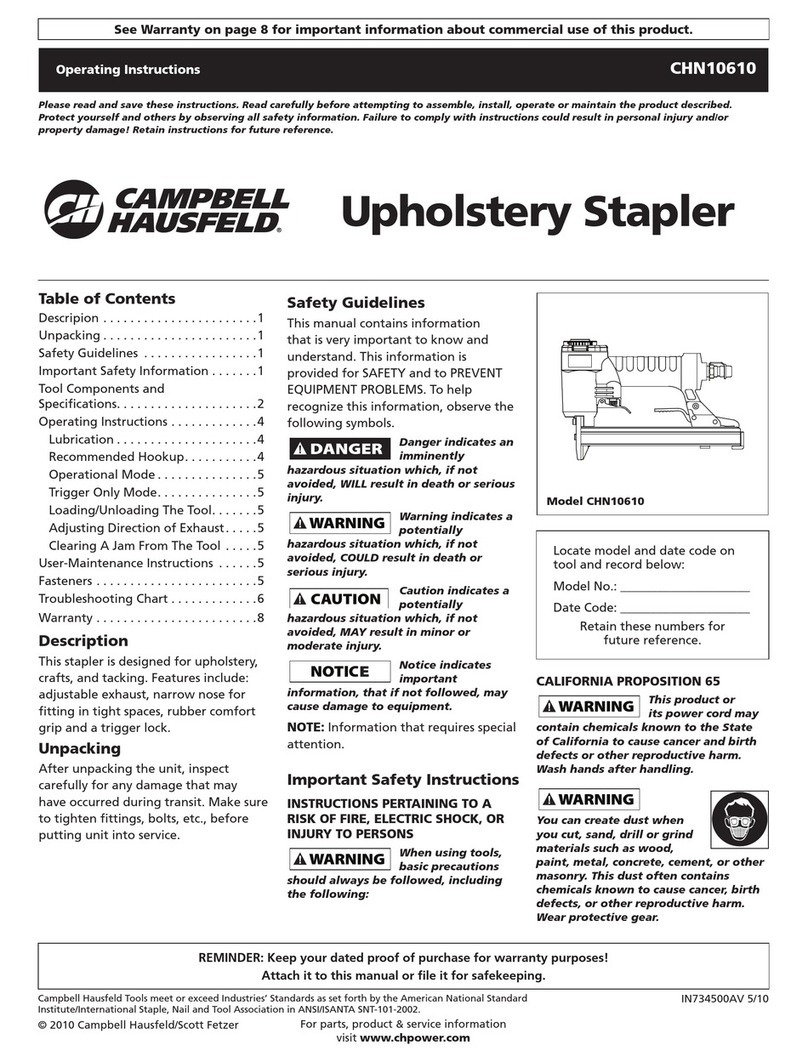
Campbell Hausfeld
Campbell Hausfeld CHN10610 operating instructions

Ryobi
Ryobi RA-NP2325-S Operator's manual

Grizzly
Grizzly H5626/7 instruction manual


